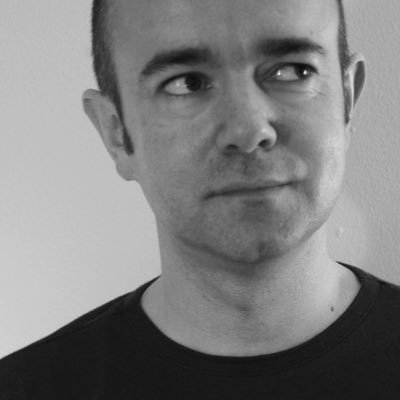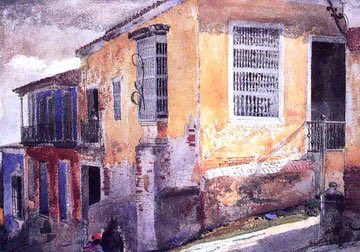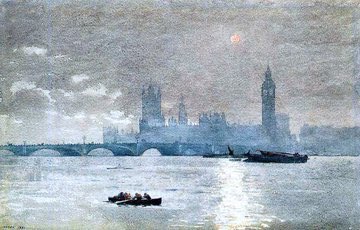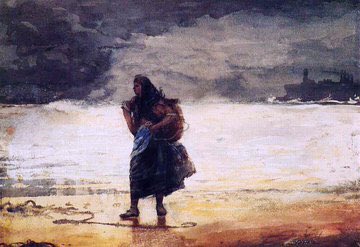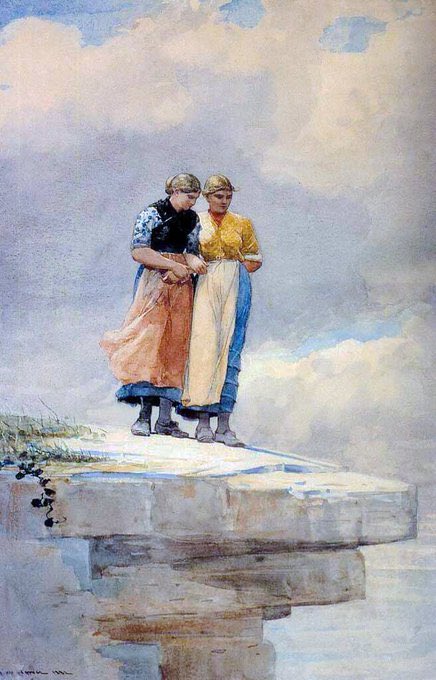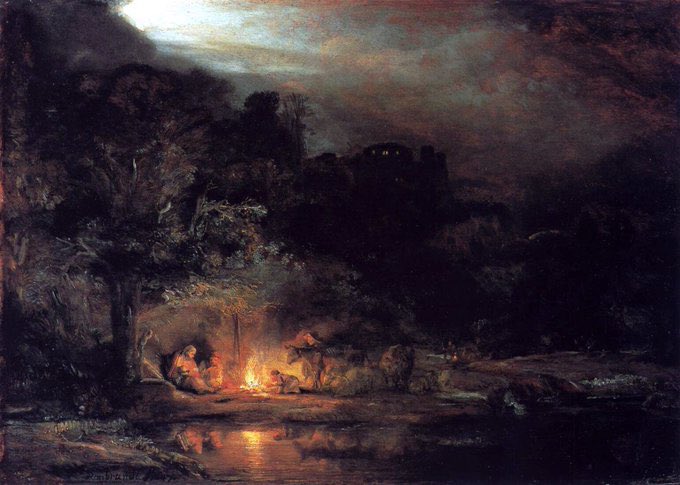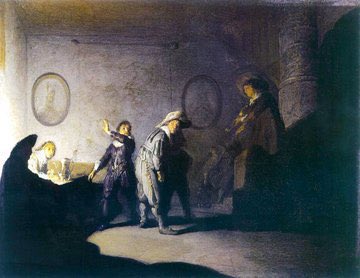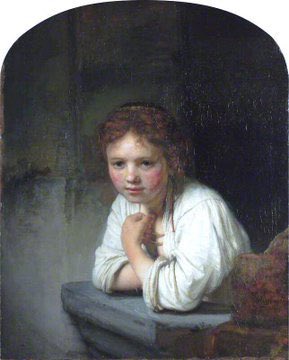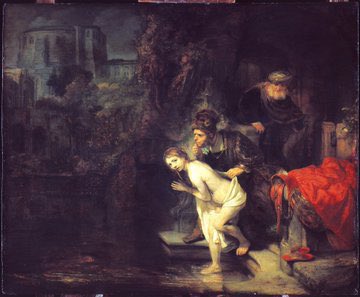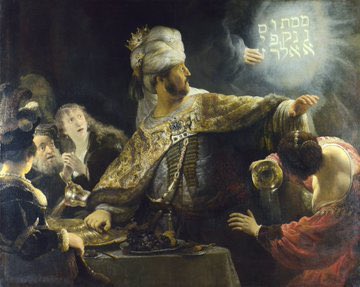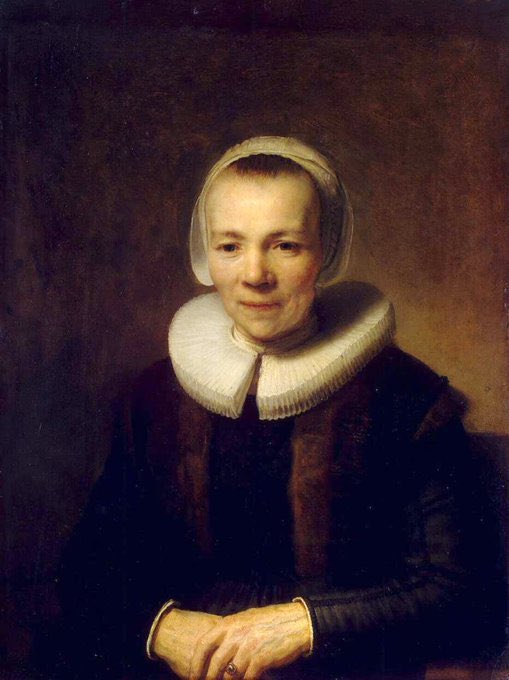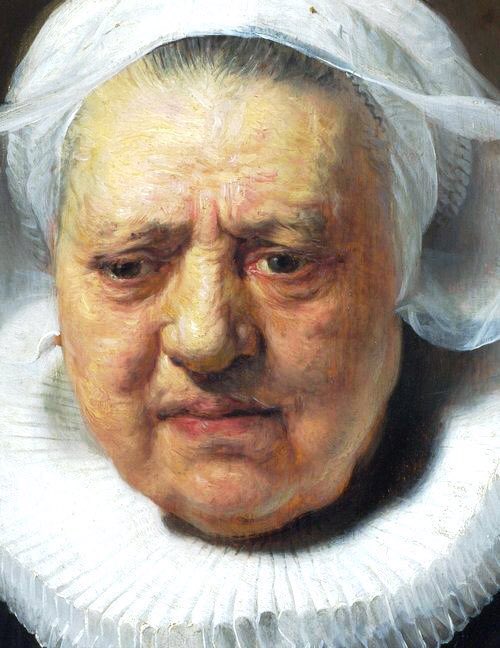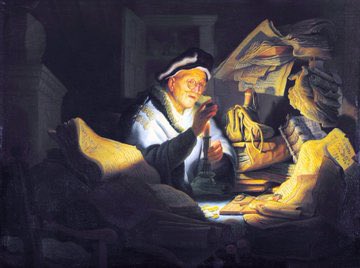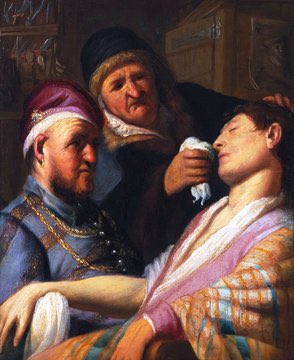Homer’s fame was such that stories of him now appeared in the magazines that he once illustrated. Rest (1885), Sponge Fishing (1885), Street Corner (1885) & Eight Bells (1886)
Homer visited England (1881-2) & painted scenes in Tyne & Wear. He was interested in painting ordinary people working. The Herring Net (1881), Houses of Parliament (1881), Fisherwoman (1882) & Looking over the Cliff (1882). He used a darker palette for this work.
For Irish people there are a number of important Rembrandt’s in the National Gallery. His Rest on the Flight (1647), the Demidoff Rembrandt (1632-3) & La Main Chaude (c1628). The latter shows a beer drinking game involving slapping a player on the bottom in the dark...
In the 1640s Hendrickje came into his life & would become his muse & life partner. Girl at a Window (1645), Holy Family (1645), Adoration of the Shepherds (1646) & Supper At Emmaus (1648). The latter shows he was looking at Titian (one of his favourite artists)
Susannah (c1634), Sacrifice of Isaac (1635), Belshazzar’s Feast (1636) & Portrait of Baartgen Martens Doomer (1640). Story telling is all in his religious works - tenseness, vulnerability & surprise. His portrait of Baartgen is a moving image of empathy.
His portraits are powerful images of his sitters. Centuries later we feel we have some understanding of who these people were & how they felt. Johannes Wtenbogaert (1633), Artemisia (1634), Descent from the Cross (1634) & Aechje Claesdar (1634)
Rembrandt always showed a great deal of empathy & respect towards the elderly. With astonishing ability he creates psychologically profound stories in his pictures. St Paul (1629-30), Anna & the Blind Tobit (c1630), Jeremiah (1630) & A Man taking a Leak (1631)
He was back in Leiden with his mate Jan Lievens & they opened a studio together (1624). He took students from 1627 (they had to pay fees). Rembrandt in his studio (1626-8), Tobit accusing Anna (1626) & Parable of the Rich Man (1627). The latter is an early masterpiece of light
Born in the University city of Leiden, his parents were comfortable - being a miller & the daughter of a baker. They were also a mixed marriage which allowed him to rise above the sectarianism of the 17th C. Touch, Smell & Sight (1624-5) storytelling was a thread through his work
